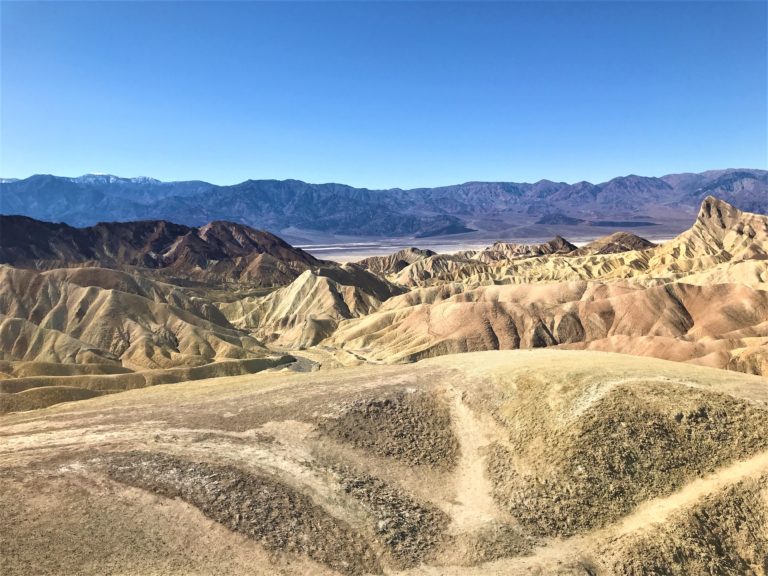
Zabriskie Point is a popular viewpoint located in Death Valley National Park, California, known for its stunning views of the badlands landscape and colorful rock formations. Here is a brief history of Zabriskie Point:
The area around Zabriskie Point has a long and complex geological history. Millions of years ago, the region was covered by a shallow sea that deposited layers of sediment and created the colorful rock formations that are visible today. Over time, the region was uplifted, eroded, and shaped by wind and water, creating the badlands landscape that is characteristic of Death Valley.
The name “Zabriskie” comes from Christian Brevoort Zabriskie, a vice-president of the Pacific Coast Borax Company, which operated in the region in the early 20th century. The company was involved in the mining and transportation of borax, a mineral used in the manufacture of cleaning products.
In the 1920s, a subsidiary of the Pacific Coast Borax Company began building a small town called Zabriskie Point nearby, which included housing for workers, a post office, and a school. The town was abandoned in the 1940s, but some of the buildings and foundations are still visible today.
Zabriskie Point became a popular destination for tourists and photographers in the 1960s, thanks in part to the 1970 film “Zabriskie Point” directed by Michelangelo Antonioni. The film was set in Death Valley and featured scenes shot at Zabriskie Point, which helped to popularize the area.
Today, Zabriskie Point is one of the most visited and photographed spots in Death Valley National Park. It offers stunning views of the surrounding badlands, as well as the distant mountains and valleys. Visitors can reach the viewpoint by hiking a short trail from the parking area, or by driving along a nearby road.

Hiking From Zabriskie Point
During my drive through Death Valley I had the opportunity to do two trail runs. One starting from the Badwater Basin at Golden Canyon to Gower Gulch and back. The other from Zabriskie Point Badlands Loop.
The Golden Canyon Loop is a 4.0 mile loop and the Badlands loop is around 2.7 miles.









